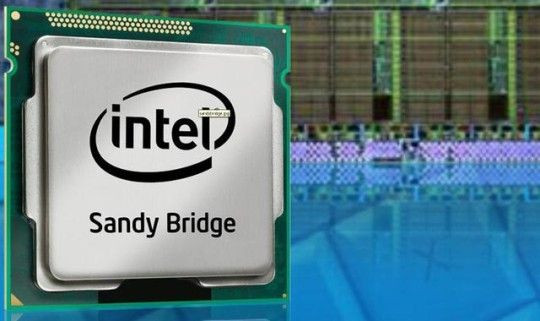Will Intel Miscue Impact HP, Dell, Apple, Western Digital, Seagate?

Will Intel Corp.'s (INTC) design issue impact Hewlett-Packard Co. (HPQ), Dell Inc. (DELL), Apple Inc. (AAPL), Western Digital Corp. (WDC) and Seagate Technology PLC (STX)? Intel's design issue could have a ripple effect throughout the IT Hardware food chain, said an analyst at Barclays Capital.
Intel said it has discovered a design issue in a recently released support chip, the Intel 6 Series also known as Cougar Point (shipping since Jan. 9, 2011) and has implemented a silicon fix. The chipset is utilized in PCs with Sandy Bridge processors.
Intel stated that it has stopped shipment of the affected support chip from its factories, corrected the design issue and has begun manufacturing a new version of the support chip to resolve the issue.
The design issue pushes the Sandy Bridge PC launch back a few weeks; Intel expects to begin delivering the updated version of the chipset in late February with full volume recovery in April (March is optimistic scenario).
A costly design flaw in Intel's support chipset in the Intel 6 Series, Cougar Point, was due to a circuit oversight, the company said. Samsung Electronics said it would fully refund customers who had purchased its personal computers with flawed chipsets from Intel.
Intel believes that about 8 million affected units have shipped to date with relatively few consumers impacted by this issue (no returns/complaints to date). The only systems sold to an end customer potentially impacted are Second Generation Core i5 and Core i7 quad core based systems. Intel expects to fill some of the void with older generation products in calendar first quarter.
While the Intel design issue could have a ripple effect throughout the IT Hardware food chain, pushing out the highly anticipated “demand bump” from the Sandy Bridge launch by a few weeks, we believe the impact is really on timing and not fundamentals. We could see some delayed PC purchases with shipments now pushed into second quarter of 2011, said Ben Reitzes, an analyst at Barclays Capital.
Reitzes said the delayed build could impact drive manufacturers -- Western Digital and Seagate -- more than the PC manufacturers on the bottom line, but hard disk drive (HDD) companies did not provide a “bump” for Sandy Bridge in outlooks.
From a PC perspective, Reitzes currently estimates total PC units to be down 7 percent quarter-over-quarter for calendar first quarter -- better than the previous 5 year average of down 11 percent quarter-over-quarter.
Given this announcement, Reitzes believes his PC unit estimate is likely to have a downside bias for calendar first quarter given the potential for push-out of shipments of new systems combined with a potential for delayed purchases.
We believe this announcement could delay some purchasing by customers (primarily corporate customers) into calendar second quarter, and that we now could see some upside to our estimate for a 4 percent quarter-over-quarter growth in PC shipments, said Reitzes.
While Intel's chip problem is mostly a timing issue, Reitzes could also see some modest revenue impact for PC vendors Hewlett-Packard and Dell, who both have a January quarter-end.
Apple is also thought to be using Sandy Bridge for some upgrades, but Reitzes has believed Apple's new Macs incorporating this technology would always start to ship in the June quarter. As a result, Reitzes sees little to no meaningful impact on Apple from the delay and noted that PC's only account for about 14 percent of HP's EBIT.
While PC original equipment manufacturers (OEM) is expected to be impacted only very modestly by Intel's announcement, Reitzes believes drive manufacturers could see a bigger impact as any unit upside potential for calendar first quarter of 2011 is likely to be pushed into calendar second quarter of 2011.
Reitzes believes that drive makers are likely to see some momentum related to Sandy Bridge in the June quarter, which could mean upside to his estimates.
Intel pointed out that the design flaws could in some cases degrade the quality of the chip-set thereby causing degradation in the performance or functionality of SATA linked devices, which includes HDDs and DVD drives. Disk drives typically used in PCs have SATA-based interfaces that enable the interaction with the PC. If the interface is not functioning properly, data that is saved on a hard-drive may not be able to be retrieved properly or at normal speeds (3 GB/s or 6 GB/s).
While this prognosis may sound severe, both Seagate and Western Digital already issued conservative total available market (TAM) guidance for the March quarter -- with no real bump from Sandy Bridge expected for the March quarter anyway. In fact, Reitzes believes HDD pricing has firmed after a quick drop during the very end of calendar fourth quarter of 2010.
We are currently modelling drive prices to decline modestly in first quarter of 2011, at a slightly lower rate than the previous few quarters. Our recent HDD checks indicate that while drive makers are taking a conservative stance with regard to first quarter of 2011 TAM, the disk drive supply chain is more optimistic, said Reitzes.
Reitzes is modeling drive shipments down only in the mid digit range quarter-over-quarter for March, which now seems to lack upside to revenues -- but could still be accompanied by more benign pricing.
With respect to calendar second quarter, Reitzes is modelling unit shipments to essentially be inline with calendar first quarter shipments -- however he believes this estimate could be conservative as drive makers could fully begin to benefit from any Sandy Bridge related momentum in the June quarter.
© Copyright IBTimes 2024. All rights reserved.





















